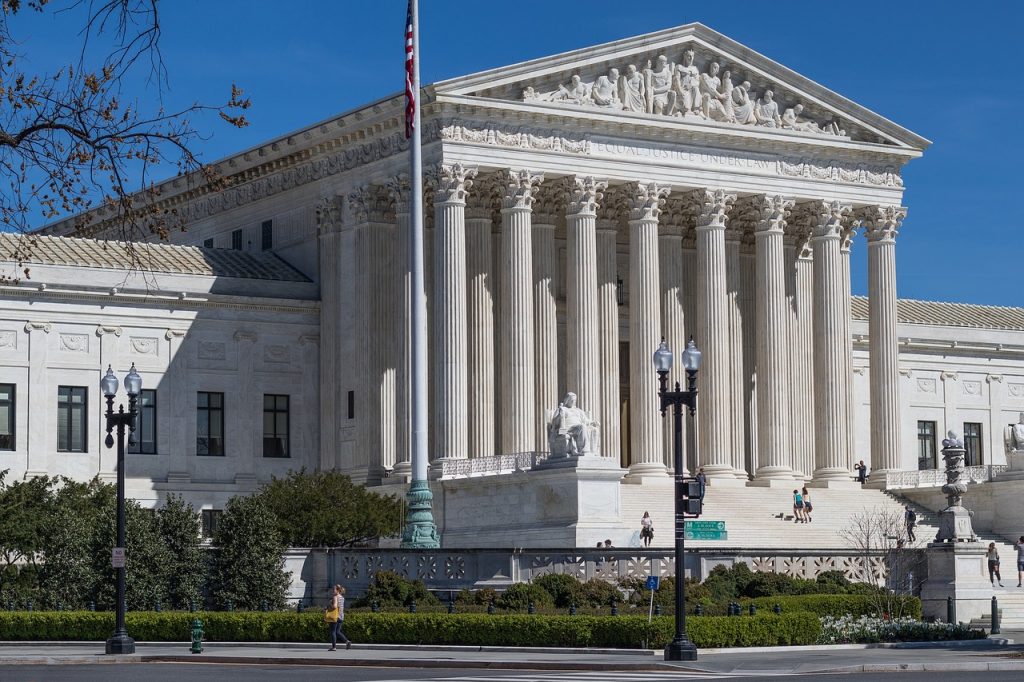This writer has a vivid memory of the day he arrived in Los Angeles for graduate school. It was July 2, 1964 as President Lyndon Johnson signed the 1964 Civil Rights Act into law. There were unbridled celebrations in downtown, as well as in South Central, LA. Many Black people rightly felt that a new milestone had been reached. That law was designed to outlaw racial discrimination in public accommodations, public facilities, and employment. Many considered it long overdue.
If one could transport him/herself back to that day, he/she would realize how much of a difference the law would make. What was not that apparent to people who pay too little attention to history, however, was that Congress had passed an equally far-reaching bill, the 1875 Civil Rights Act, 89 years earlier. The 1875 Civil Rights Act had been passed by the House 162-100 and by the Senate 38-26; and then it was signed into law by President Ulysses S. Grant March 1, 1875. That law was based upon Amendment 14 of the Constitution and seemed to have been clearly in line with what its intended purposes were, especially in terms of specific legislation to enforce the amendment. It specifically protected the civil and legal rights of Black citizens in public accommodations, public transportation, and jury service in the same manner in which they were protected for white people.
In its basic structure and intent, the 1964 law was similar to the 1875 law. So why was there a need for the new law?
Unfortunately, on October 15, 1883 in an 8-1 decision, the Supreme Court ruled in the civil rights cases that the 13th and 14th amendments did not empower Congress to safeguard the rights of Blacks citizens against the actions of private citizens or establishments, only against state actions. This essentially gutted that civil rights measure, since the vast majority of racially discriminatory acts stem from individuals and private companies. Following the decision in the civil rights cases, Jim Crow laws multiplied. Just 13 years later, in the case of Plessy vs. Ferguson, the Supreme Court ruled that under the equal protection clause, there could be separate facilities for Black and white citizens, so long as they were equal. This meant that segregated facilities were perfectly fine. Things then became worse as states copied one another with Jim Crow policies.
The devastating ruling in the civil rights cases – just as in the cases of Dred Scott before, Shelby County vs. Holder, and many others afterward – shows what can happen at the hands of a conservative Supreme Court. It shows that nothing can be taken for granted. It is necessary to make this point because, although many are pleading for the passage of the John Lewis and other voting rights bills, that will not guarantee that the current conservative Supreme Court will not declare them, or significant parts of them, unconstitutional. If that happens, the voter suppression laws passed by various state legislatures will play the same discriminatory roles that they played throughout the southern and border states after Reconstruction. Even worse, under the new umbrella of states’ rights, other racist policies may arise and be legitimized, despite the 1964 Civil Rights Act.
The authors of the 1964 Civil Rights Act decided to base that law upon Congress’s authority to regulate commerce rather than on the 14th Amendment since the court had talked about the limits of the 13th and 14th amendments. There may have been wisdom in making that change, but a court in the future can reason away even that constitutional base as well, nullifying the 1964 act.
Citizens would do well to keep the date of October 15th in mind as the date that the Civil Rights Act of 1875 was nullified by the Supreme Court as the current version of the Supreme Court began its session on October 11th. This court can be as destructive as have been some others in the past, especially in light of the fact that many of the justices were appointed by racially-conservative leaders.
To help avoid and remedy such situations going forward, Black people would do well to learn from and build on their history. The building must be in terms of arming themselves with enough valid information and then acting courageously on the relevant issues, sometimes with the help of others, but often through self-reliance. These ideas must be considered because there is no guaranteed way to advance and protect the rights of racial and ethnic minorities in the face of a determined racist majority. Had that been the case, there would have been no need to pass laws that spoke specifically to those racial and ethnic minorities; they would have already been protected by the general legislation that covered everybody else.
History has taught Black people, whether they learned it or not, that they must readily utilize the court system as a tool for advancement, but that it is not the only tool. That comes through loud and clear given the spotty history of the court. Even prior to approaching the courts in the pursuit of justice, Black people need to unrelentingly pressure legislators to pass the kinds of laws, and pressure executives to issue the kinds of orders, that are fair and just when it comes to matters of race, ethnicity, class, and gender. Simultaneously, they need to vote “en masse” to remove officers who are racially-conservative or biased and replace them with officers who have the track record and/or background to promote and protect the rights of all citizens.
In all things, Black people must be smart, determined, courageous, and unrelenting. Their motto must forever be, “no justice, no peace,” and about that they must be deadly serious.







